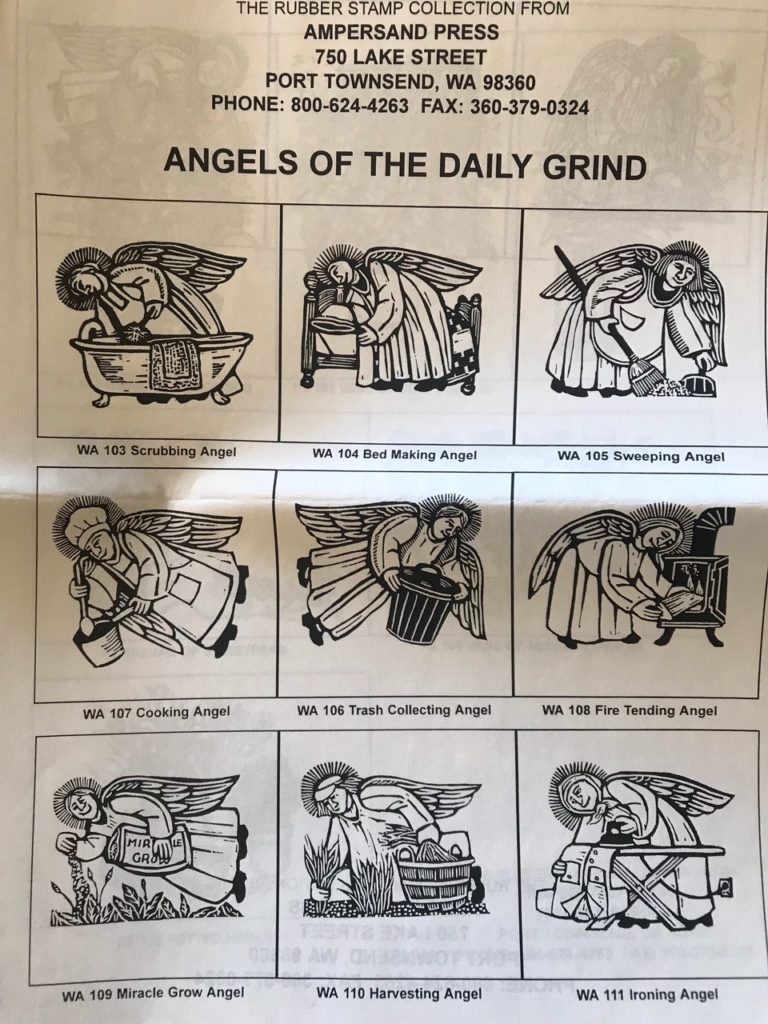Review: The Garden Game
Publisher: Ampersand Press
Year: 1996
Tagline: A Celebration of Cultivation For All Seasons
Players: 2 to 6

how we met
When I found The Garden Game at thrift, it was clearly an educational game about gardening. Educational games intrigue me (much more than they should) so I wanted to bring it home and soak in all of the gardening wisdom it had to offer me.
I should probably mention, I am not a gardener. We raise sheep and lambing happens around mid-May. That’s not the height of planting season, but it is important for weeding, watering, other things. And so we just never have prioritized gardening. So I probably have plenty to learn on the topic!
how it plays
The Garden Game is a spin and move game where your goal is to have the most points in the end by having the most amazing garden of all!
On their turn, players spin the spinner to see how many places they move. At the end of their turn, they draw an Almanac card and do what it says. If they happen to land on a space with another player, they draw a Garden card before drawing an Almanac card!

Almanac cards usually have you pick a Garden card, but they can also cause you to lose a Garden card, Lose a turn or Spin Again. Drawing a Garden card always means you can choose the visible card in the discard pile or draw blindly from the deck.
At the beginning of each turn you can try to trade Garden cards with other players. Trades are really where this game is won or lost.
Garden cards are placed out in front of you face up – don’t hide that beautiful garden! Some Garden cards will protect you from unpleasant Almanac cards. But the ultimate goal is to have the most points. Every single garden card you have is worth a single point, but garden cards double in points if you create a pollinating set. This means having two copies of any single plant plus whatever it takes to pollinate them. Pollinating sets consist of either two (for self-pollinating plants) or three cards. Each card in the set is worth 2 points instead of 1 point.

Once the first player passes the End space then each other player has one more turn. Then the game ends and everyone should count up their garden scores. The player with the most valuable garden wins The Garden Game!
how it went
Oh, our play went largely as expected. And as much as I appreciate an indie, labor-of-love educational game, there’s a few gripes I have.
First, the pawns are small rocks. I appreciate the message and natural approach, I really do. But my game comes with 21 of these small pebbles/rocks. And approximately 18 of them are semi-identical. The biggest trick is finding four pawns that you can all tell apart. And I just can’t shake the image of the game creators literally grabbing a handful of pebbles and throwing them into the box.

Second, the game is not super educational. It comes with a short booklet that includes information on plant life cycles, pollination, gardening basics, a glossary and a bibliography. The back of the booklet is where the game rules can be found. The cards do go into some best practices, but I feel like the majority of the educational aspect is outside of the game and in the booklet.

Third, the game departs from reality as needed, which I do not appreciate in an educational game. The booklet prepares you for this if you actually read it, but otherwise the rules may get confusing when you encounter self-pollinating plants in your garden, as an example. You still need two of them to make a pollinating set.
Fourth, and I feel bad saying this, but the art is not my personal taste.
We dutifully traveled around the game board. The goal, probably, is to travel as slowly as possible so that you can draw as many Garden cards as possible. We had amazing gardens. But your Garden cards will get stolen and lost and all kinds of bad things.
In the end, I won The Garden Game with 28 points! Keri had 27 (what a loser!), Bill had 18 and I do not have John’s points recorded. I think he was just happy it was over.

FUN FACT: my copy of The Garden Game came with an original Packing List from when it was ordered by someone in Milwaukee in December 1997. They paid $26.95 which is a lot more than I paid. 🙁 But the paperwork included other neat things you could order from this company, like Angels of the Daily Grind rubber stamps!

play or pass
Pass. I have a special place in my heart for educational games like this, but I want the theme to be relentless. In this case, the theme is pasted onto a spin and move game. Nothing about the actual gameplay says gardening to me. I didn’t learn much about gardening. The most difficult part of play was figuring out which pebble pawn was mine.